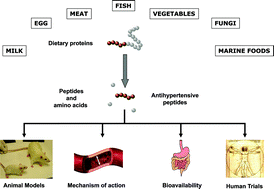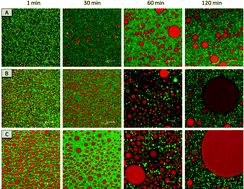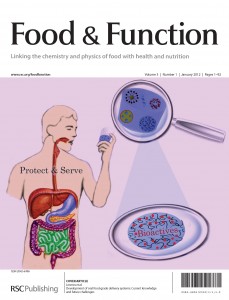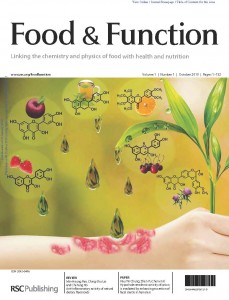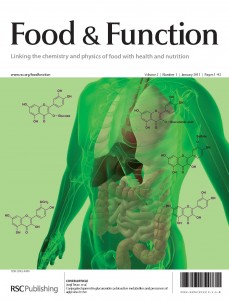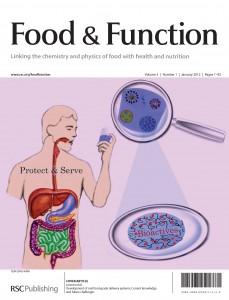This month sees the following articles in Food & Function that are in the top ten most accessed:-
Espresso coffees, caffeine and chlorogenic acid intake: potential health implications
Thomas W. M. Crozier, Angelique Stalmach, Michael E. J. Lean and Alan Crozier
Food Funct., 2012, 3, 30-33, DOI: 10.1039/C1FO10240K
Whole grain cereals: functional components and health benefits
Rafael Borneo and Alberto Edel León
Food Funct., 2012, Advance Article, DOI: 10.1039/C1FO10165J
Pu-erh tea, green tea, and black tea suppresses hyperlipidemia, hyperleptinemia and fatty acid synthase through activating AMPK in rats fed a high-fructose diet
Hsiu-Chen Huang and Jen-Kun Lin
Food Funct., 2012, Advance Article, DOI: 10.1039/C1FO10157A
Nuts, especially walnuts, have both antioxidant quantity and efficacy and exhibit significant potential health benefits
Joe A. Vinson and Yuxing Cai
Food Funct., 2012, Advance Article, DOI: 10.1039/C2FO10152A
Inhibitory effects of garcinol and pterostilbene on cell proliferation and adipogenesis in 3T3-L1 cells
Chin-Lin Hsu, Yu-Jyun Lin, Chi-Tang Ho and Gow-Chin Yen
Food Funct., 2012, 3, 49-57, DOI: 10.1039/C1FO10209E
Review of the efficacy of green tea, isoflavones and aloe vera supplements based on randomised controlled trials
Gary Williamson, Patrick Coppens, Lluís Serra-Majem and Tristan Dew
Food Funct., 2011, Advance Article, DOI: 10.1039/C1FO10101C
Dietary agents in the prevention of alcohol-induced hepatotoxicty: preclinical observations
Arnadi Ramachandrayya Shivashankara, Aysha Azmidah, Raghavendra Haniadka, Manoj Ponadka Rai, Rajesh Arora and Manjeshwar Shrinath Baliga
Food Funct., 2012, Advance Article, DOI: 10.1039/C1FO10170F
Inhibition of advanced glycation endproduct formation by foodstuffs
Chi-Hao Wu, Shang-Ming Huang, Jer-An Lin and Gow-Chin Yen
Food Funct., 2011, 2, 224-234, DOI: 10.1039/C1FO10026B
Encapsulation of polyphenolic grape seed extract in polymer-coated liposomes
Monika Gibis, Effie Vogt and Jochen Weiss
Food Funct., 2012, Advance Article, DOI: 10.1039/C1FO10181A
Development of oral food-grade delivery systems: Current knowledge and future challenges
Revital Cohen Benshitrit, Carmit Shani Levi, Sharon Levi Tal, Eyal Shimoni and Uri Lesmes
Food Funct., 2011, Advance Article, DOI: 10.1039/C1FO10068H
Why not take a look at the articles today and blog your thoughts and comments below.
Fancy submitting an article to Food & Function? Then why not submit to us today or alternatively email us your suggestions.











